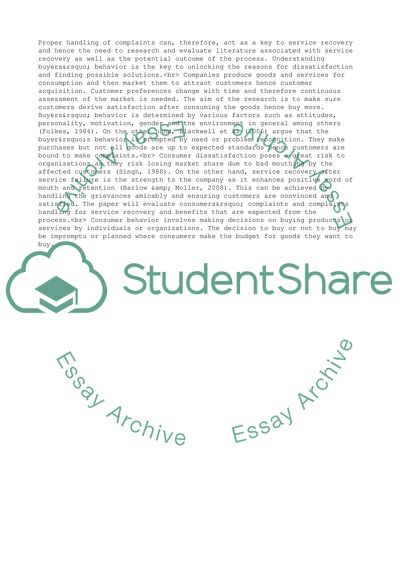Cite this document
(“Service Recovery Research Paper Example | Topics and Well Written Essays - 2750 words”, n.d.)
Service Recovery Research Paper Example | Topics and Well Written Essays - 2750 words. Retrieved from https://studentshare.org/business/1736971-current-issue-subject-why-do-consumers-complain-and-how-can-organisations-handle-them-effectively
Service Recovery Research Paper Example | Topics and Well Written Essays - 2750 words. Retrieved from https://studentshare.org/business/1736971-current-issue-subject-why-do-consumers-complain-and-how-can-organisations-handle-them-effectively
(Service Recovery Research Paper Example | Topics and Well Written Essays - 2750 Words)
Service Recovery Research Paper Example | Topics and Well Written Essays - 2750 Words. https://studentshare.org/business/1736971-current-issue-subject-why-do-consumers-complain-and-how-can-organisations-handle-them-effectively.
Service Recovery Research Paper Example | Topics and Well Written Essays - 2750 Words. https://studentshare.org/business/1736971-current-issue-subject-why-do-consumers-complain-and-how-can-organisations-handle-them-effectively.
“Service Recovery Research Paper Example | Topics and Well Written Essays - 2750 Words”, n.d. https://studentshare.org/business/1736971-current-issue-subject-why-do-consumers-complain-and-how-can-organisations-handle-them-effectively.


